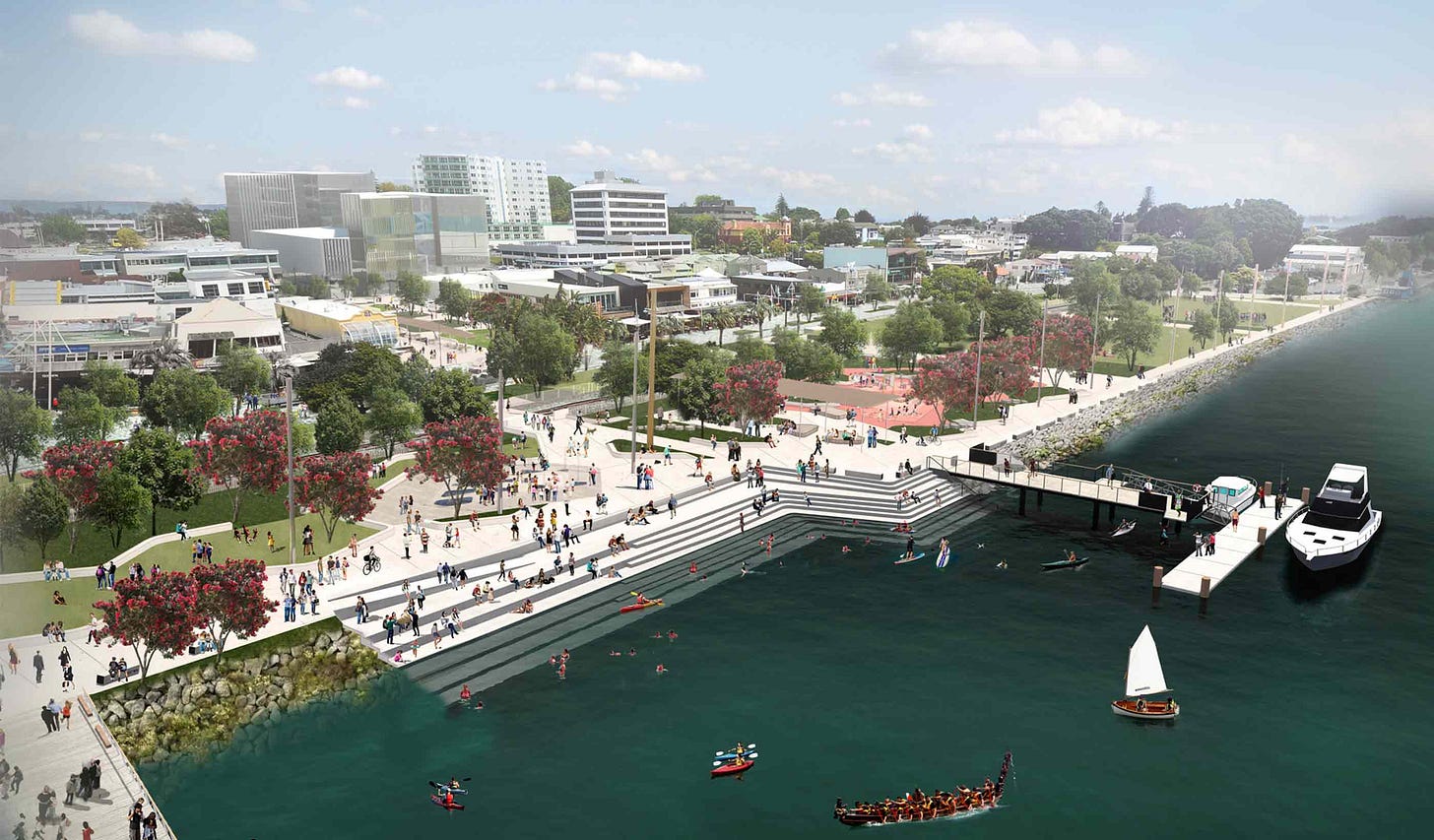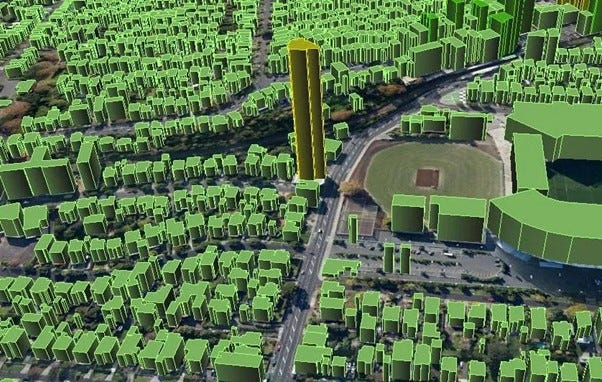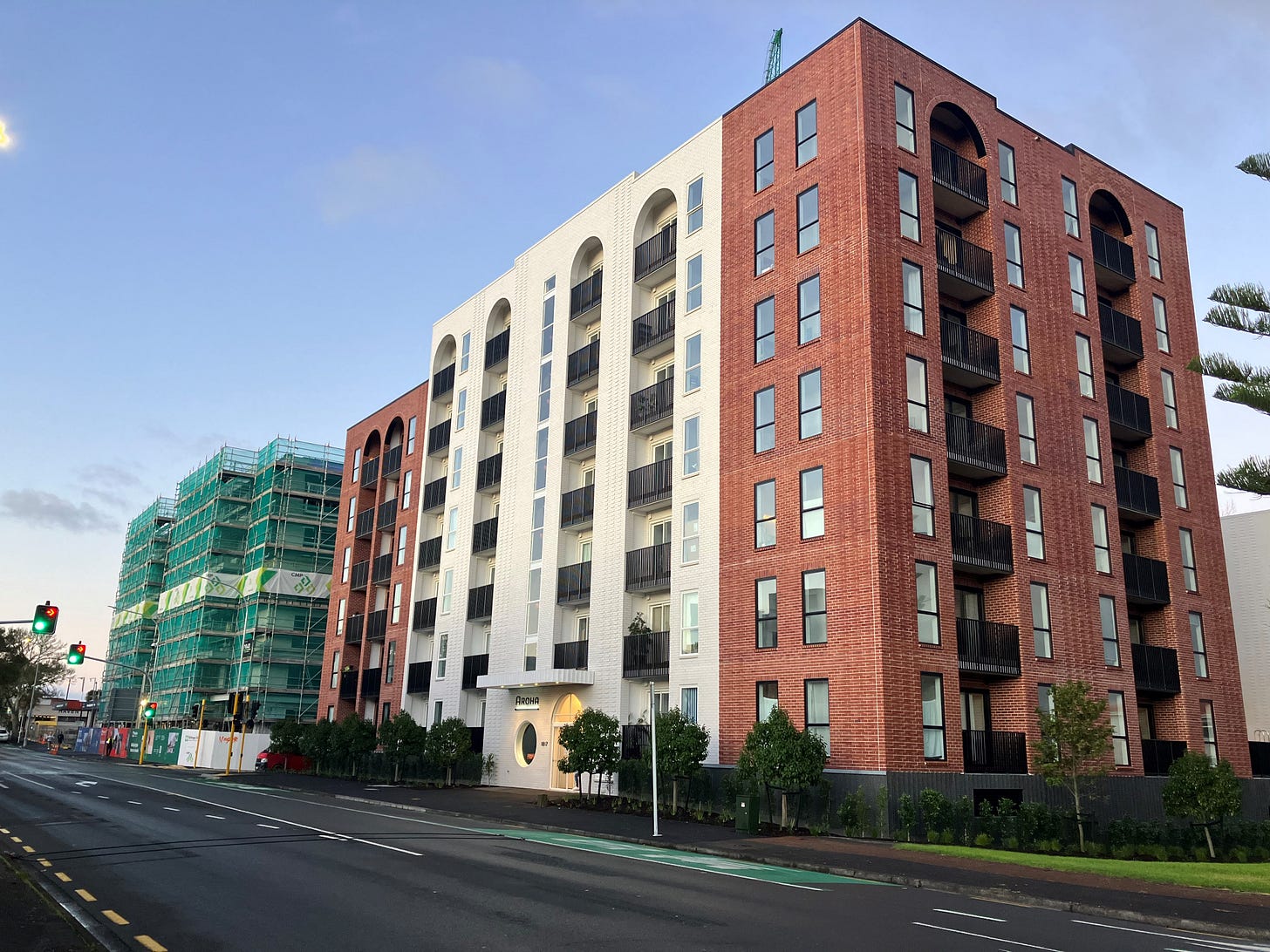Urban intensification can be a remedy for our broken towns and cities
I often see comments around the need to try and slow population growth in order to “catch up” on infrastructure and other deficits. I believe instead, we should view accommodating growth through urban intensification, as an opportunity to correct many of the poor planning decisions that are the origin point for so many of the issues our towns and cities face.
The adoption of separating land uses like residential and commercial in the 20th Century, known as Euclidean zoning, has been fundamental to how our cities have evolved. It has increased travel requirements to access jobs, education, social opportunities, and daily needs. Spreading out these activities, better suited car travel, over public transport which relies on proximity and diversity of users to drive trip commonality. In turn this contributed to the severe decrease of people walking, cycling and taking public transport we have seen in the last few decades. This is the primary reason our transport emissions are so high. It has led to increased infrastructure provision with the need to deliver larger service networks. Furthermore, zoning and the imposition of minimum car parking requirements, weakened many existing centres through increased the land requirements for businesses to operate.
Enabling urban intensification within the existing urban area is underway in our five largest centres through the National Policy Statement on Urban Development (NPS-UD) and through the Medium Density Residential Standards (MDRS). While there will be significant benefits through increased housing supply and in turn affordability, the benefits are far broader.
Strengthening our existing centres.
By accommodating more people close to existing town centres, we can support their revitalisation. The increase in density creates a larger customer base for local businesses, stimulates demand for goods and services, and attracts further investment and development.
Tauranga is a prime example of this where most growth has occurred through greenfield growth, centred around new car centric shopping malls on the urban fringe, which have been detrimental to the Tauranga City Centre, currently suffering from very high retail vacancy rates. However, Plan Change 33, which implements the NPS-UD and MDRS, will enable the intensification of most of Te Papa Peninsula to 6 or more storeys. This will enable medium to high density development centred around a trunk public transport and cycling corridor on Cameron Road through to the City Centre. Alongside this is the planned $2 billion investment in the Tauranga City Centre Action and Investment Plan to re-secure the role of the City Centre role as the heart of the Western Bay of Plenty sub-region. This plan envisages a genuine mix of business, residential, educational, cultural and recreational uses supported by prioritised walking, cycling and public transport routes.

Supporting emissions reductions.
By locating people, goods and services closer together, we can reduce the requirement to travel as far and as often. This leads to more trips that are natural to walking, cycling (or other micromobility like e-scooters) or public transport. Currently, the way our towns and cities are structured means cars are the most convenient transport option for many trips. By establishing larger populations around centres, we support access through proximity again.
A great example of this is the urban intensification occurring in Avondale in Auckland. The Avondale town centre has hundreds of apartments either recently completed, under construction or consented, with hundreds more homes in the surrounding residential neighbourhoods of the suburbs. There are good public transport connections to the city centre and New Lynn with plans for further improvements, including to the crosstown route to Onehunga. Avondale will also benefit significantly from the City Rail Link, providing a 24% reduction in travel time to Britomart in the Auckland City Centre and higher train frequencies. The Avondale town centre has many key services like doctors, dental services, pharmacies, alongside local businesses. While it doesn’t quite have all daily needs currently, the growing population will support new businesses to open.
Changes in land use patterns and our urban form will not happen overnight, but the changes we make today will enable significant reductions in emissions over the coming decades, as more growth occurs around existing centres. My personal view is that the NPS-UD is one of the more ambitious climate policies of the last two terms of Labour-led governments.
Reducing infrastructure costs.
Councils all around Aotearoa are struggling with maintenance costs and demand for capital expenditure on new infrastructure. Enabling and encouraging urban intensification can reduce urban sprawl, minimises the need for new infrastructure development in outlying areas, and maximises the use of existing transport networks, utilities, and public spaces. Higher density development, due to higher property values, pays far more in rates than low density, while requiring less infrastructure to support it. Located well, in and around town centres and rapid transit, it can be a strong encouragement in its own right to walking, cycling and public transport as the natural and obvious ways to get around.

Notably, the development above is only a four-storey apartment building of 27 units but has 13 times the value of the surrounding low-density dwellings.
Urban intensification is only part of the picture.
While the NPS-UD and MDRS is a positive start, we need to shift away from Euclidean zoning to enable mixed-use development in current residential areas, as a permitted activity. Building code requirements should be relied upon to ensure new commercial and retail activities in residential areas are accessible and mitigate potential impacts on neighbours. Our planning system should only seek to separate genuinely incompatible activities like industrial from residential.
All of this will of course require investment and neighbourhoods to change, but growth through urban intensification can ultimately contribute to better places that support the local communities and businesses, while addressing many of the challenges our towns and cities face.
A special thanks to my friend and colleague
for his contributions on this piece.



